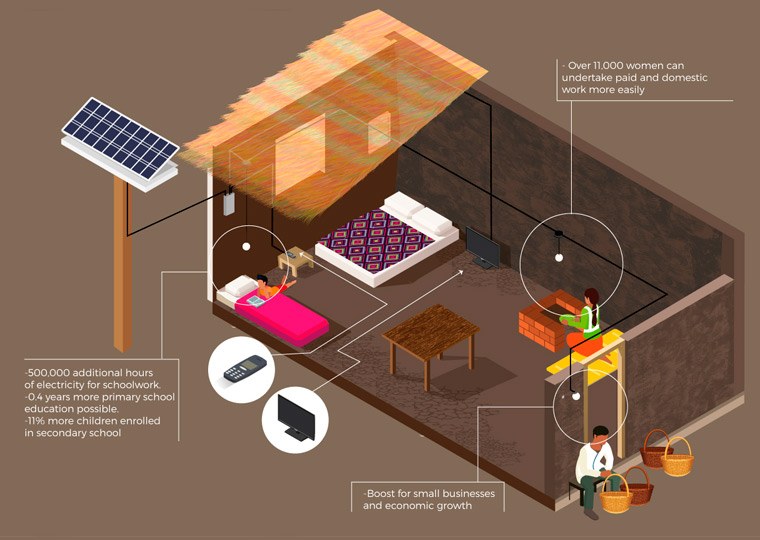-
ACCIONA takes clean, sustainable electricity to remote rural areas isolated from the grid
-
““As the sun dies in the hills, And the agonizing light, I know a new light will come And relieve our solitude””
When the Oaxacan violinist Macedonio Alcalá and the lyricist Javier Gonzales composed the Mexican waltz God Never Dies in 1968, little could they have imagined how prophetic their verses would prove to be. As the years passed, their hymn became the de facto anthem of Oaxaca state.
With the Pacific Ocean lapping its 500km of coastline, Oaxaca has the richest biodiversity of any Mexican state. It is home to a larger variety of birdlife than the whole of the United States of America, has 16 different ethnic groups and offers the broadest spectrum of native languages in Mexico.
The large majority of the population (52.7%) live in rural areas, which has advantages and disadvantages. One great handicap affecting the thousands of small communities and settlements scattered across valleys and mountainous terrain is the impossibility of connecting everyone to the electricity grid.
-
With no prospect of connection over the next decade, acciona.org Foundation, the Oaxaca Government, AECID (the Spanish International Development Cooperation Agency) and AMEXICD (the Mexican International Development Cooperation Agency) formed an APPD (Public-Private Development Alliance). Since 2012, these organisations have been lighting up the life of 30,000 Oaxacans with clean, sustainable energy. The Oaxaca “Light at Home” program is electrifying communities of fewer than 100 inhabitants that are without a connection to the electricity grid. The program uses Third Generation Solar Home Systems (3GSHS) which are driving sustainable development in three ways: economic, social and environmental. They are also contributing to the seventh of the United Nations 2030 Agenda Sustainable Development Goals (SDGs): ensuring access to affordable, reliable, sustainable and modern energy for all.
-
Daylight ends and Oaxaca lights up the night
With solar panels outside the homes and batteries inside them, when “the sun dies in the hills”, Oaxaca lights up the night as 7,512 houses enjoy at least four hours of electric light. Thanks to the installations, lamps, lanterns, mobile phone chargers, radios, television and a wide variety of electronic devicesnow form part of the daily life of 30,000 Oaxacans, something unimaginable several years ago.
A motion as simple as flicking a switch represents a substantial improvement in living conditions for the communities that have embraced the Light at Home program. Thanks to the 11 million extra hours of artificial light, 11,000 women can carry out domestic or paid work more easily.
For the youngsters, it means 500,000 additional hours of light to do school homework, which has extended primary education by almost six months and seen 11% more pupils registered at secondary school.
The prolongation of the day’s hours is also boosting small businesses and helping economic growth.
-

-
Positive impacts in the community
In parallel, the Oaxaca Light at Home program positively impacts in the community on several fronts.
Economically, by saving a total of 800,000 euros, an average of 105 euros (112 US dollars or 2,200 Mexican pesos) a year per home by not using other energy sources.
Environmentally, thanks to the use of renewable energy, avoiding the emission of 1,200 tonnes of CO2 to the atmosphere, as well as the generation of 13.3 tonnes of battery waste.
Meanwhile, the health of the subscribers to the Oaxaca Light at Home program has improved notably, with the reduction of illnesses and accidents from smoke and fires, a source of respiratory and eye problems.
The “agonising light” that darkens the Oaxacan hills is being replaced by a new light, illuminating the present so its inhabitants can prosper in the future.
Find out more about the Oaxaca Light at Home program by visiting its website.





